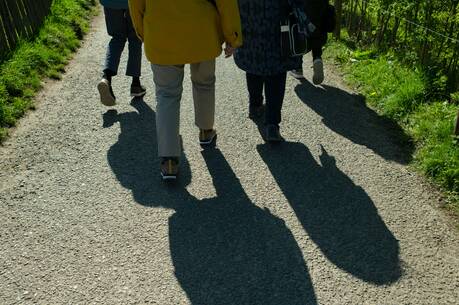Blind Trust
One of the streets I walk along on my way to work is lined with a string of shops, where a whole cluster of homeless people customarily beg for money from passersby. Some people walk past more briskly when one of the beggars approaches them. Others smile or nod in acknowledgement. Still others dig into their pockets for loose change. It is particularly unnerving when one of these homeless people shouts loudly or continues to call out after you. Some cities, when hosting special events, try to rid the streets of any such people who might pester visitors.
It is easy to understand why the crowd in today’s Gospel tried to hush a beggar who shouted after Jesus as he was leaving Jericho. Because of the crowd, Jesus might not have been able to see the man, who was blind, but Jesus hears his insistent cries for mercy.
There is a masterly interplay of sight and sound in this passage. Having told us that Bartimaeus is unable to see, Mark shifts the emphasis to auditory and vocal exchanges. Bartimaeus hears that Jesus is passing by, so the beggar starts shouting out his request for mercy. The others try to silence Bartimaeus, but he calls out all the more. Jesus hears him and says, “Call him.” They summon Bartimaeus, telling him that Jesus is calling him.
With the repetition of the verb “call,” Jesus now becomes the insistent one, calling out to Bartimaeus. Jesus’ attention is turned completely to this person in need. This is not a curt, “What do you want?” but a deeply interpersonal exchange between Jesus and Bartimaeus as Jesus asks, “What do you want me to do for you?” It is not clear whether Barti-maeus is asking to see for the first time or to see again (the Greek verb can have both senses). As with the woman healed of hemorrhages (5:34), Jesus tells Bartimaeus to go, assuring him that his faith has saved/healed him (the Greek verb used here also can have several senses). And like the fishermen at the shore of the Sea of Galilee (1:16-20), Bartimaeus does not go away, but instead follows Jesus on the way.
In its original literary context within the Gospel of Mark, today’s passage is the second in a pair of bookends. The first is the story at the beginning of the central section of teaching on discipleship in which Jesus cures a blind man in Bethsaida (8:22-26).
The two healing stories enclose a section in which Jesus’ followers are struggling mightily to understand and follow him. Yet they misunderstand and even oppose him, especially as Jesus begins to teach them about his coming passion. The story of Bartimaeus gives assurance that the disciples can be healed of their inner blindness and enabled to follow Jesus on the way. Like Bartimaeus, who threw aside his cloak to come to Jesus, they may need to cast off whatever shields them from the demands of Jesus’ way. Whatever keeps them from being vulnerable to the costly love of Jesus will need to be tossed away.
If the disciples were among those in the crowd who were blinded to the needs of the beggar and tried to muffle his cries for mercy, they must learn to attune their ears to such cries and call such persons to Jesus, rather than stand in their way. The disciples must want to see as Jesus sees. And whenever they cannot see or understand what God is doing, as when their beloved teacher cries out in anguish from the cross, seemingly unheard by God (15:34), they will need to learn to follow blindly on the way, trusting the inner sight that assures them of divine love that is stronger than any suffering, stronger even than death.
This article also appeared in print, under the headline “Blind Trust,” in the October 19, 2009, issue.








